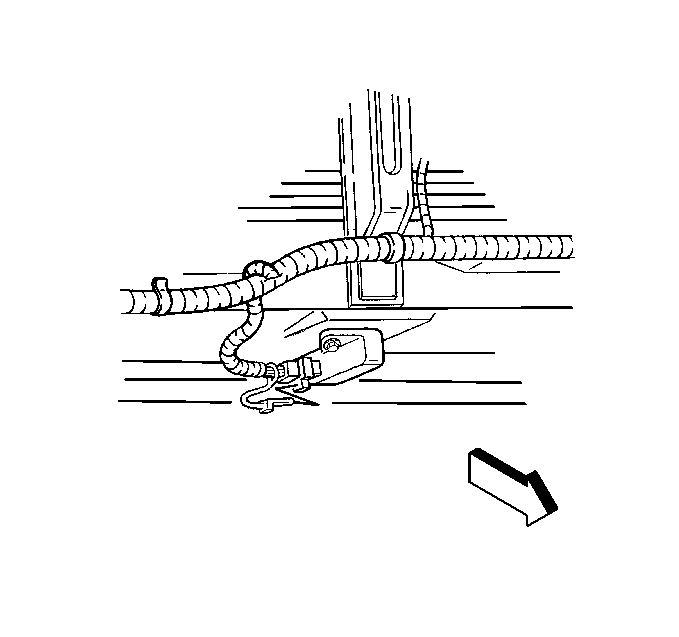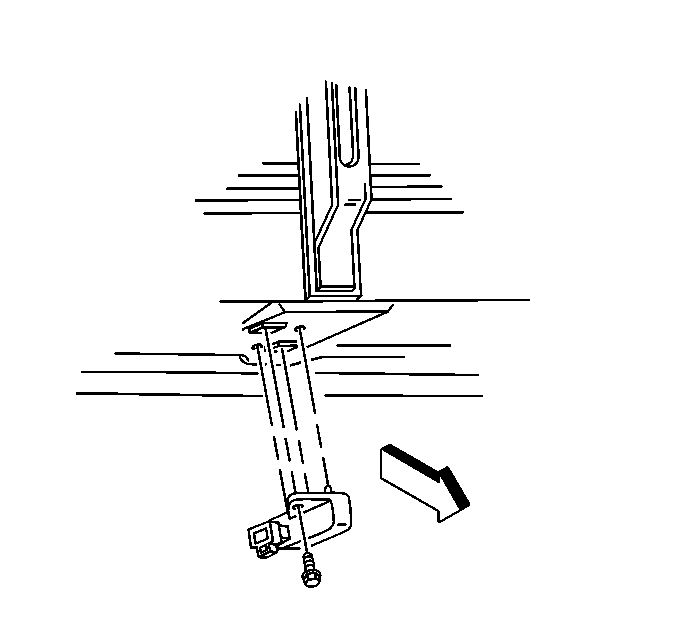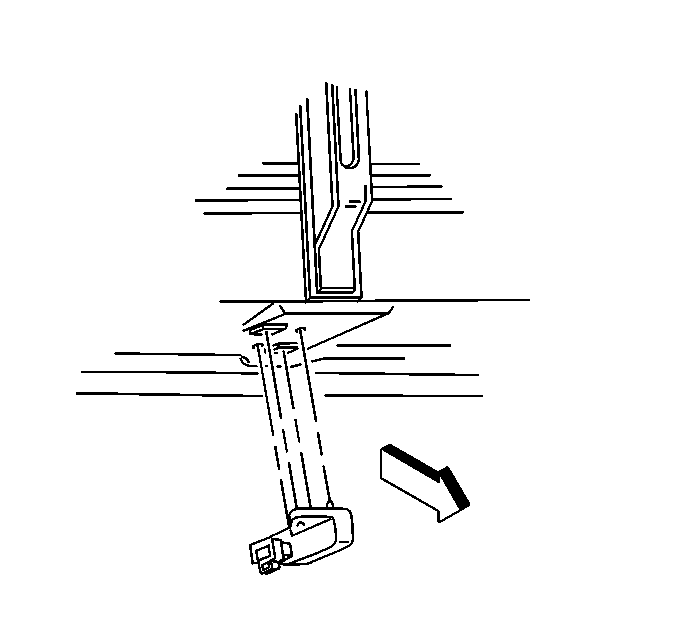Caution: Be careful when you handle a sensor. Do not strike or jolt a sensor.
Before applying power to a sensor:
• Remove any dirt, grease, etc. from the mounting surface. • Position the sensor horizontally on the mounting surface. • Point the arrow on the sensor toward the front of the vehicle. • Tighten all of the sensor fasteners and sensor bracket fasteners
to the specified torque value.
Removal Procedure
- Disable the SIR system. Refer to Disabling the SIR System .
- Remove the off road skid plate (if equipped). Refer to Engine Protection Shield Replacement in Frame and Underbody.
- Remove the connector position assurance (CPA) from the inflatable restraint front end discriminating sensor harness connector.
- Disconnect the inflatable restraint front end discriminating sensor harness connector from the sensor.
- Remove the mounting fasteners.
- Remove the inflatable restraint front end discriminating sensor from the vehicle.
- Perform the following steps in order to complete the fastener repair:




Important: The following procedure should be utilized in the event that sensor mounting holes or fasteners are damaged to the extent that the sensor may no longer be properly mounted.
| 7.1. | Remove and discard the improperly installed fastener. |
| 7.2. | Chisel off the damaged weld nut. |
| 7.3. | Condition the front end lower tie surface where the new weld nut is to be installed. |
| 7.4. | Install the new weld nut (GM P/N 11514034) or equivalent into position. |
| 7.5. | Migweld the new weld nut to the front end lower tie surface in the correct location. |
| 7.6. | Use the new fastener (GM P/N 11515926) or equivalent. |
Installation Procedure
- Install the inflatable restraint front end discriminating sensor to the front end lower tie surface make sure the arrow is pointing toward the front of the vehicle.
- Install the inflatable restraint front end discriminating sensor mounting fasteners.
- Connect the inflatable restraint front end discriminating sensor harness connector to the sensor.
- Install the connector position assurance (CPA) to the inflatable restraint front end discriminating sensor harness connector.
- Install the off road skid plate (if equipped). Refer to Engine Protection Shield Replacement in Frame and Underbody.
- Enable the SIR system. Refer to Enabling the SIR System .


Notice: Use the correct fastener in the correct location. Replacement fasteners must be the correct part number for that application. Fasteners requiring replacement or fasteners requiring the use of thread locking compound or sealant are identified in the service procedure. Do not use paints, lubricants, or corrosion inhibitors on fasteners or fastener joint surfaces unless specified. These coatings affect fastener torque and joint clamping force and may damage the fastener. Use the correct tightening sequence and specifications when installing fasteners in order to avoid damage to parts and systems.
Tighten
Tighten fasteners to 8 N·m (71 lb in).


